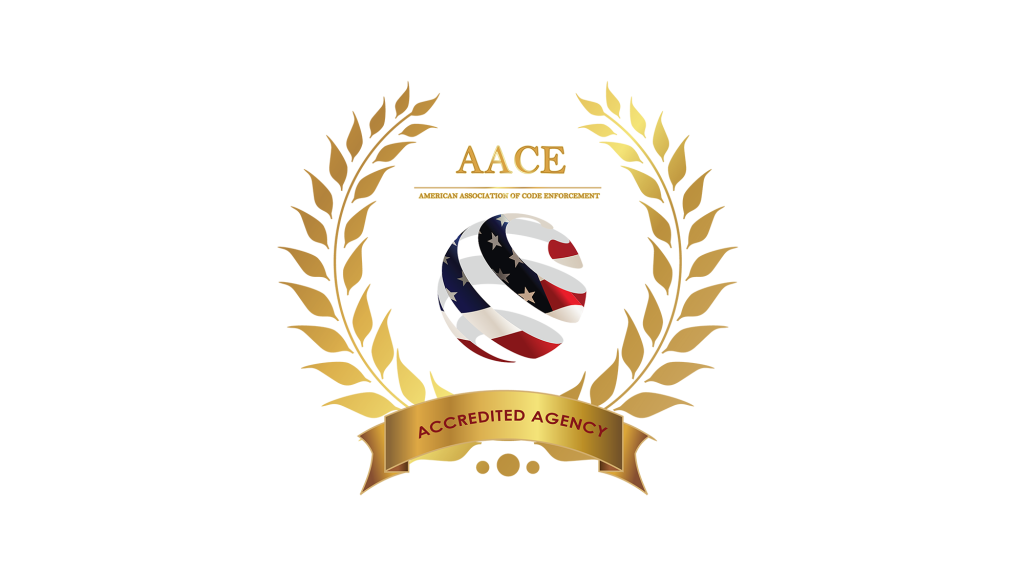Conducting Code Board Hearings
Introduction
After the investigation has been completed and the Notice of Violation (NOV) and citation have been issued, the violator determines the next step in the process. The violator may choose to pay the civil penalty and not contest the infraction or he may disagree with the issuance of the citation and choose a hearing before the code enforcement and nuisance board (CENB).
He is certainly within his rights to do this and should not be unfairly penalized for doing so. Of course, those who choose to contest a violation run the risk of having a more severe penalty imposed against them than if they did not contest the violation. Although a hearing before a CENB is administrative in nature and does not require all of the formalities and procedures that a hearing or trial in a court of law would, there are still certain requirements that must be followed in order guarantee fairness and accuracy. This chapter will briefly go through the process of conducting a hearing before the CENB.
It would be impossible to set forth every detail of conducting a hearing in this limited format. Therefore, only the major issues that need to be considered will be addressed. Items that will be discussed include due process protections that must be afforded a defendant; who presents the case; how the case is presented; and the role of the CENB in all of this.
Due Process
Because the rights of individual citizens may be negatively impacted (fines, liens, foreclosures, etc.) by decisions of the CENB, certain procedures must be followed in order to maintain a level of fundamental fairness. Black’s Law Dictionary (5th edition) defines due process rights as “all rights which are of such fundamental importance as to require compliance with due process standards of fairness and justice.” As mentioned previously, a CENB hearing is not the same as a trial in a court of law. The requirements are not as stringent, but they are, nonetheless, just as important to assure a just decision.
Due process requirements for a hearing before the CENB include:
Notice. The violator or defendant must be notified or put on “notice” of his rights and any proceedings which may affect his rights as a private citizen. A persons “rights” include the right to be informed of the charges against him and an opportunity for a hearing on the charges before any penalty is imposed. Additionally, the violator must receive“adequate notice” of the hearing, including information concerning when and where the hearing will take place. It is not enough that an individual is informed of a hearing shortly before it is to begin. An individual must be given adequate time to prepare his defense.
According to KRS 65.8828, once an individual has requested it, the CENB must schedule a hearing. Once the hearing has been scheduled, the CENB must notify the person who requested the hearing of the date, time and place of the hearing. This notification must be made not less than seven (7) days before the date of the hearing.
How an individual is notified of his rights is also a critical factor in determining whether proper notice has been given. Again, according to KRS 65.8828, notice may be given by certified mail, return receipt requested; personal delivery; or by leaving the notice at the person’s usual place of residence with any individual residing therein who is eighteen (18) years of age or older and who is informed of the contents of the notice. There may be situations, however, when the individual can not be located, or when there is no individual to be served, i.e., in the case of a partnership or corporation. The following procedures for service were previously set forth in this manual, but for ease of reference they are included here.
Service may be accomplished by personal delivery or by certified mail, return receipt requested or by leaving the notice at the person’s usual place of residence with any individual residing therein who is eighteen (18) years of age or older and who is informed of the contents of the documents. Service may also be accomplished by delivering the documents to an agent authorized by appointment or by law to receive such service of process for that individual.
If acceptance of the documents are refused, service is still good if the documents were simply offered to that person. Refusal to accept service should be noted on the return receipt.
Service can not be made upon an unmarried infant under the age of eighteen (18) or upon a person of unsound mind.
Service may be made upon a partnership or unincorporated association subject to suit under a common name by serving a manager or managing agent of the partnership or an officer or managing agent of the association, or an agent authorized by appointment or by law to receive service on its behalf.
Service shall be made upon a corporation by serving an officer or managing agent thereof, or any other agent authorized by appointment or by law to receive service on its behalf.
Service may be made upon an individual out of this state, other than an unmarried infant, a person of unsound mind or a prisoner, by certified mail, personal delivery of the document by a person over the age of eighteen (18) years of age, or by other methods allowed by law. Proof of service may be made either by the return receipt or by affidavit of the person making such service, upon or attached to a copy of the document, stating the time and place of service and the fact that the individual served was personally known to the person making service.
Service may be made upon a nonresident individual who transacts business through an office or agency in this state, or a resident individual who transacts business through an office or agency in any action growing out of or connected with the business of such office or agency, by serving the person in charge.
In a action against a person whose name is unknown, the person shall be described in the documents as “unknown party”. If the person’s name or place of residence is discovered pending the action, then the documents shall be amended accordingly.
With service by certified mail, return receipt requested, attach the “green card” receipt with the original paperwork. If the green card is not returned, then there may not have been proper service. The green card is proof that service was made on the alleged violator.
Right to Counsel. Any individual who requests a hearing has the right to be represented by an attorney at the hearing. The attorney is authorized to speak on behalf of the alleged violator (except when the individual is testifying), present his “case,” and cross-examine any witnesses against the alleged violator. It will be unusual for a person to retain an attorney in situations such as this, but it is important to remember that they have the right if they choose.
Opportunity to Be Heard. Every individual who is charged with violating a local ordinance must have the opportunity to present a defense. The alleged violator should have the opportunity to tell his side of the story. This would include the right to testify, to call witnesses on his behalf, to introduce physical evidence, and to cross-examine those who have testified against him.
Although an individual has the right to present a defense, there are certain limitations. The CENB may set limits on the time of presentation and the relevancy of what is presented . An individual should not be allowed to disrupt the process by spending hour after hour introducing irrelevant evidence. The CENB should limit an individual’s evidence to that which is relevant to the case. Relevant evidence is evidence that tends to prove or disprove a material fact. The general test for relevance is whether the evidence tends to prove or disprove any fact material to the issues presented before the CENB.
Additionally, the CENB may place limits on the time allowed for presentation. Of course, this power should be exercised carefully so as to insure that the alleged violator has sufficient time to present his case. Hard and fast rules as to the amount of time of presentation are effective methods of controlling a hearing. However, when dealing with complicated matters and numerous evidentiary issues, the CENB should be cognizant of the need for additional time. Fixed time limits are nearly impossible to apply uniformly and still result in a fair hearing. Burden of Proof. The burden of establishing that a violation occurred rests with the city. The alleged violator technically does not have to present a defense. If the city can not prove that a violation took place no fine or remedial measures may be imposed. Shifting the burden of proof to the alleged violator would be a violation of his due process rights.
Hearing Format
In order to provide consistency and increase efficiency, the CENB should try to use the same format for all of the cases it hears. The following procedures should be observed when conducting a CENB hearing:
Call to Order. At the beginning of the hearing, the chairman should call the meeting to order and ask the clerk to announce the first case. The clerk will then identify the case number and read aloud the Citation and Request For Hearing. This places the CEO and the defendant on notice that their case is up next. Before beginning, the chairman should ask the alleged violator if he wishes to go forward and contest the charges. He may get “cold feet” at the last moment and agree to pay the smaller fine.
Oath. To save time, the chairman should administer oaths to all witnesses at once.
Presenting the Case. Because the burden is on the city to prove it’s case, it should go first. Most often, the CEO will present the case on behalf of the city while the city attorney acts in an advisory capacity to the CENB. Although there may be some situations where the city attorney actually presents the case. Because the CEO will present the case himself, his testimony will be introduced through a “narrative” as opposed to a question-and-answer format. The testimony that is offered by the CEO should include:
- Identification; name and governmental employer.
- Background and experience.
- All pertinent information about the violation: who, what, when, where, and why.
- CEO’s actions. All information related to inspection, investigation, evidence gathering, and issuance of NOV and citation.
- Introduce physical evidence.
- Call other witnesses.
After the CEO completes his presentation, the chairman should ask the CEO if he has anything further to offer. If the CEO declines, the chairman should then allow the defendant to present his case. Similar to the CEO, the defendant’s case will most likely be presented through a narrative format. Additionally, it probably will not be presented in as clear and concise fashion as the CEO’s case. The defendant may offer irrelevant or improper evidence in his defense. The CENB should disregard or limit the introduction of such evidence while maintaining the right of the accused to present a competent defense.
It is important to remember that the formal rules of evidence do not apply in CENB hearings. However, when allowing the introduction of evidence, fundamental fairness and due process will apply. There will certainly be times when improper or irrelevant testimony will be offered. The CENB should rely on the city attorney to keep this type of testimony out of the hearing. The CENB should simply attach the appropriate weight to evidence that should not have been introduced. In other words, the CENB should ignore it.
The CENB may, in order to illicit the most useful information, question any witness, including the CEO and defendant, or call any additional witness, or require the production of evidence that it feels would shed light on the matter. Finally, the CENB should only consider evidence that was presented at the hearing. It would be unfair to consider evidence that both parties did not get an opportunity to respond to.
Upon completion of the evidence, the chairman shall close the hearing. Deliberation. After all of the evidence and testimony has been introduced and the hearing has been closed, it is up to the CENB to make a decision. The CENB must decide whether or not a violation of a local ordinance has been committed. If the CENB determines that no violation was committed, then it must enter an order dismissing the citation. If the CENB determines that a violation did take place, the CENB must enter an order upholding the citation and may either order the offender to pay a fine in an amount up to the maximum authorized by ordinance or may order the offender to remedy the violation within a specified time to avoid a fine.
At the close of the hearing, the CENB should immediately begin deliberations. This is because the evidence and testimony will be fresh in the CENB’s mind. In this way, the CENB can avoid having to review evidence from a hearing that may have taken place days or weeks before. Additionally, by delaying the decision-making process, the CENB’s calendar and schedule becomes much more complicated. The CENB is now forced to keep track of hearings that have been held and when orders and fines need to be imposed as well as conducting new hearings. By delaying the decision-making process the chances of a code violation falling through the cracks greatly increases.
The deliberation process itself must be conducted in open session. As the CENB is considered a public agency the Open Meetings Act applies. Additionally, KRS 65.8815 (5) requires CENB meetings to be conducted in public. Because none of the exemptions to the open meeting requirement would allow such deliberations to be held in private, all deliberations and discussions must be open to the public. After the deliberations have been completed, a vote, in open session, must be taken.
In order to render a verdict in favor of the CEO, the CENB must be convinced to a certain degree that a violation took place. In other words, the CENB has a “standard of proof” that the CEO must meet before it can be determined that a violation occurred. In cases involving criminal matters the standard of proof is “beyond a reasonable doubt.. However, because a code enforcement action is civil in nature the standard of proof is“preponderance of the evidence.” Preponderance of the evidence can be defined as“that degree of evidence which when considered as a whole shows that the fact sought to be proved is more probable than not.” In other words, is it more likely than not that a violation occurred. If the CENB is fifty-one percent (51%) convinced that a violation took place, then it should enter an order upholding the citation.
Once the decision has been made, the CENB should vote and orally issue an order from the bench. The order must be approved by a majority vote. The order shall contain findings of fact and conclusions of law. The order should then be reduced to writing and mailed by certified mail, return receipt requested, or personally delivered to the violator within 5-10 working days of the issuance of the order. The CENB should set the actual time frame for supplying the violator with a copy of the written order in its rules and regulations. Of course, the CENB may only act if a majority of the CENB’s membership, i.e., a quorum is present. If a quorum is not present, then no action whatsoever may be taken. Additionally, if the meeting is adjourned before a decision is rendered, at the time the meeting is reconvened only those CENB members who were present from the beginning of the hearing should participate in the deliberations and decision-making
process.
At this point, the aggrieved party, whether it is the city or the alleged violator, may appeal the CENB’s decision to the district court of the county in which the local government is located within thirty (30) days of the date the order is issued. The appeals process is more fully discussed in the next chapter.
Official Record
According to KRS 65.8815(4), minutes must be kept for all proceedings of the CENB and the vote of each member on any issue decided by the board should be recorded in the minutes. Additionally, KRS 65.8828(3) states that all “testimony taken shall be recorded.” This could be either an audio or video recording. It is important to remember that in 1998, the code board statute was amended to provide that appeals are limited to a review of the record created before the code enforcement and nuisance board; therefore, it is extremely important that the board create a sufficient record so that the court may determine from that record that there was sufficient evidence for the board to conclude that a violation actually occurred and that the defendant is the person who committed the violation.
Let us know if anything is wrong with this page. However, please don't include any personal or financial information.


